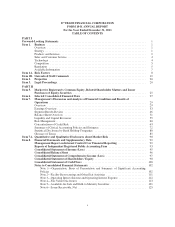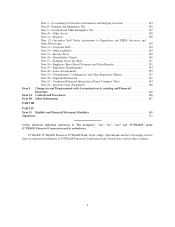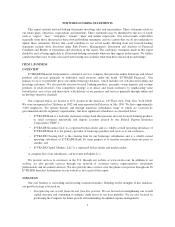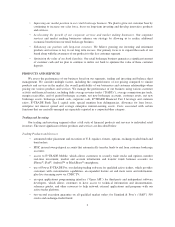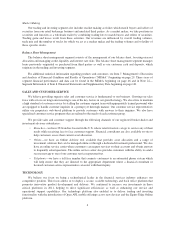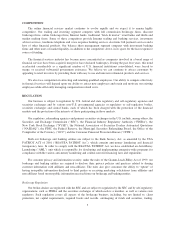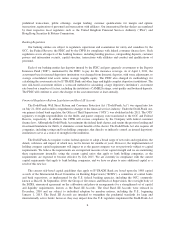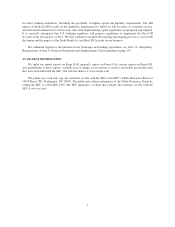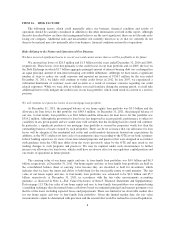eTrade 2011 Annual Report Download - page 12
Download and view the complete annual report
Please find page 12 of the 2011 eTrade annual report below. You can navigate through the pages in the report by either clicking on the pages listed below, or by using the keyword search tool below to find specific information within the annual report.an actual sale or immediate settlement could be significantly lower than both the carrying value and the estimated
fair value of the portfolio. In addition, changes in the underlying assumptions used, including discount rates and
estimates of future cash flows, could significantly affect the results of current or future fair value estimates.
Certain characteristics of our mortgage loan portfolio indicate an increased risk of loss. For example, at
December 31, 2011:
• approximately 50% and 60% of the one- to four-family and home equity loan portfolios, respectively,
had a current LTV/CLTV of greater than 100%;
• approximately 57% and 49% of the one- to four-family and home equity loan portfolios, respectively,
were originated with low or no documentation;
• borrowers with current FICO scores less than 700 consisted of approximately 37% and 38% of the one-
to four-family and home equity loan portfolios, respectively; and
• approximately 82% and 88% of the one- to four-family and home equity loan portfolios, respectively,
were purchased from a third party.
The foregoing factors are among the key items we track to predict and monitor credit risk in our mortgage
portfolio, together with loan type, housing prices, loan vintage and geographic location of the underlying
property. We believe the relative importance of these factors varies, depending upon economic conditions.
Home equity loans have certain characteristics that result in higher risk than first lien, amortizing one- to four-
family loans.
Approximately 85% of the home equity loan portfolio consists of second lien loans on residential real estate
properties. The average estimated current CLTV on our home equity loan portfolio was 112% as of December
31, 2011. We hold both the first and second lien positions in less than 1% of the home equity loan portfolio,
exposing us to risk associated with the actions and inactions of the first lien lender. We do not directly service
any of our loans and as a result, we rely on third party vendors and servicers to provide information on our loan
portfolio. We monitor our borrowers by refreshing FICO scores and CLTV information on a quarterly basis. We
do not receive complete data on the first lien positions of second lien home equity loans. In addition, we rely on
third party servicers to provide payment information on home equity loans, including which borrowers are
paying only the minimum amount due. We have incomplete information regarding the number of borrowers
paying only the minimum amounts, which impacts our ability to accurately report on whether borrowers are
repaying any principal during the draw period across the aggregate portfolio.
Home equity lines of credit convert to amortizing loans at the end of the draw period, which ranges from 60
months to 120 months. At December 31, 2011, the vast majority of the home equity line of credit portfolio had
not converted from the interest-only draw period to an amortizing loan. In addition, approximately 79% of the
home equity line of credit portfolio will not begin amortizing until after 2014. As a result, we do not yet have
sufficient data relating to loan default and delinquency of amortizing home equity lines of credit to determine if
the performance is different than the trends observed for home equity lines of credit in an interest-only draw
period.
We could experience significant losses on other securities held on the balance sheet.
At December 31, 2011, we held $422.6 million in amortized cost of non-agency collateralized mortgage
obligations (“CMO”) on our consolidated balance sheet. We incurred net impairment charges of $14.9 million
during 2011, which was a result of the deterioration in the expected credit performance of the underlying loans in
the securities. If the credit quality of these securities further deteriorates, we may incur additional impairment
charges which would have an adverse effect on our regulatory capital position and our results of operations in
future periods.
9


